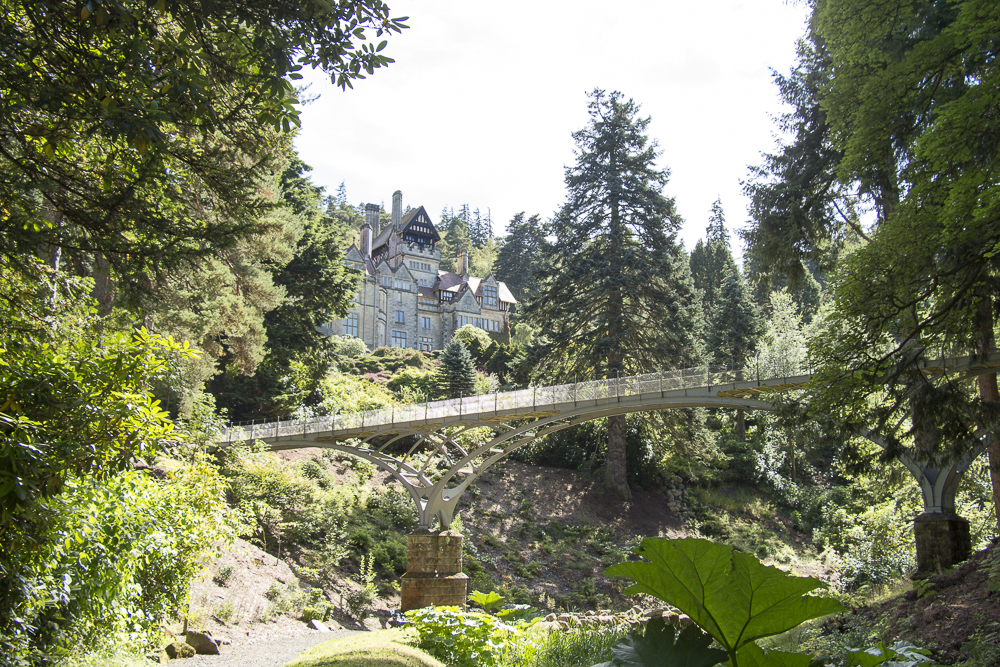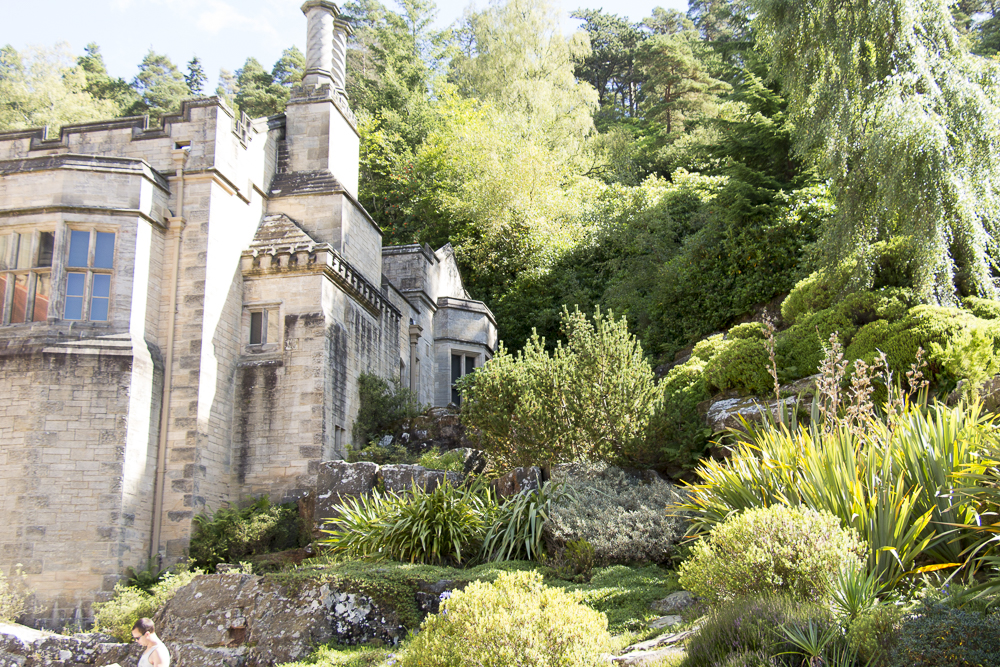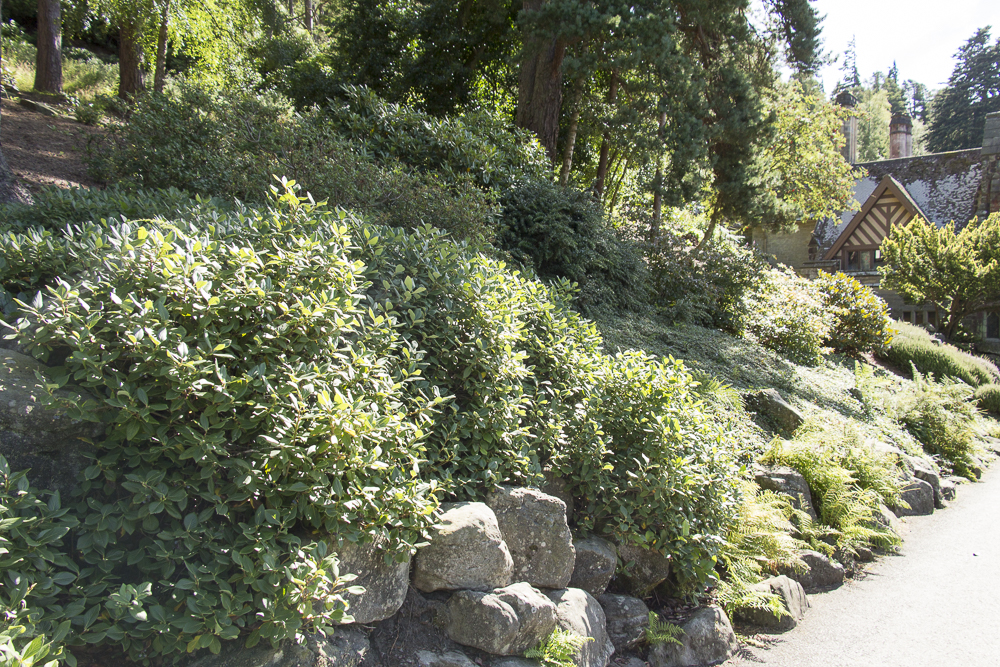Baron William Armstrong and his wife Margaret purchased the land at Cragside in 1863 and spent the reminder of their lives, until his death in 1900, developing the gardens. William Armstrong seems to have chosen the location as a result of his childhood holidays spent in the area and by the time of the purchase he had amassed a great wealth from engineering. Cragside has never been regarded as one of the great gardens and is most famous for the engineering achievements Armstrong brought to the property. It is though, a good example of a garden at the end of the Victorian era, on a very grand scale and in the Arts and Crafts style.
The garden is in two parts which the owners blended seamlessly together; an informal rock garden around the house and a wild garden which covers the reminder of the estate. There is no sign of the very formal bedding and topiary of earlier Victorian era, instead the rocky outcrop the house stands on has been complemented by a large rockery which extends down to the Debdon Burn. This is a master class in how to build a rockery and it blends beautifully into the wooded hills surrounding it.
By 1900 the garden extended to 405 ha and the woodland occupies the bulk of this area. While the area immediately around the house was planted as an ornamental garden this is an idealised woodland with some excellent examples of the trees, shrubs and rhododendrons which grow extremely well in the prevailing conditions. This large area can be accessed by a network of paths and a one-way drive encircles the majority of the woodland.
Armstrong saw the gardens as complementing and improving on nature rather than competing and controlling it. This way his garden blend into the surrounding countryside and add to it. Whilst not a classic Arts and Crafts garden, in the vein of Jekyll or Johnson, the style was always a broad one and this is an under-rated example.





